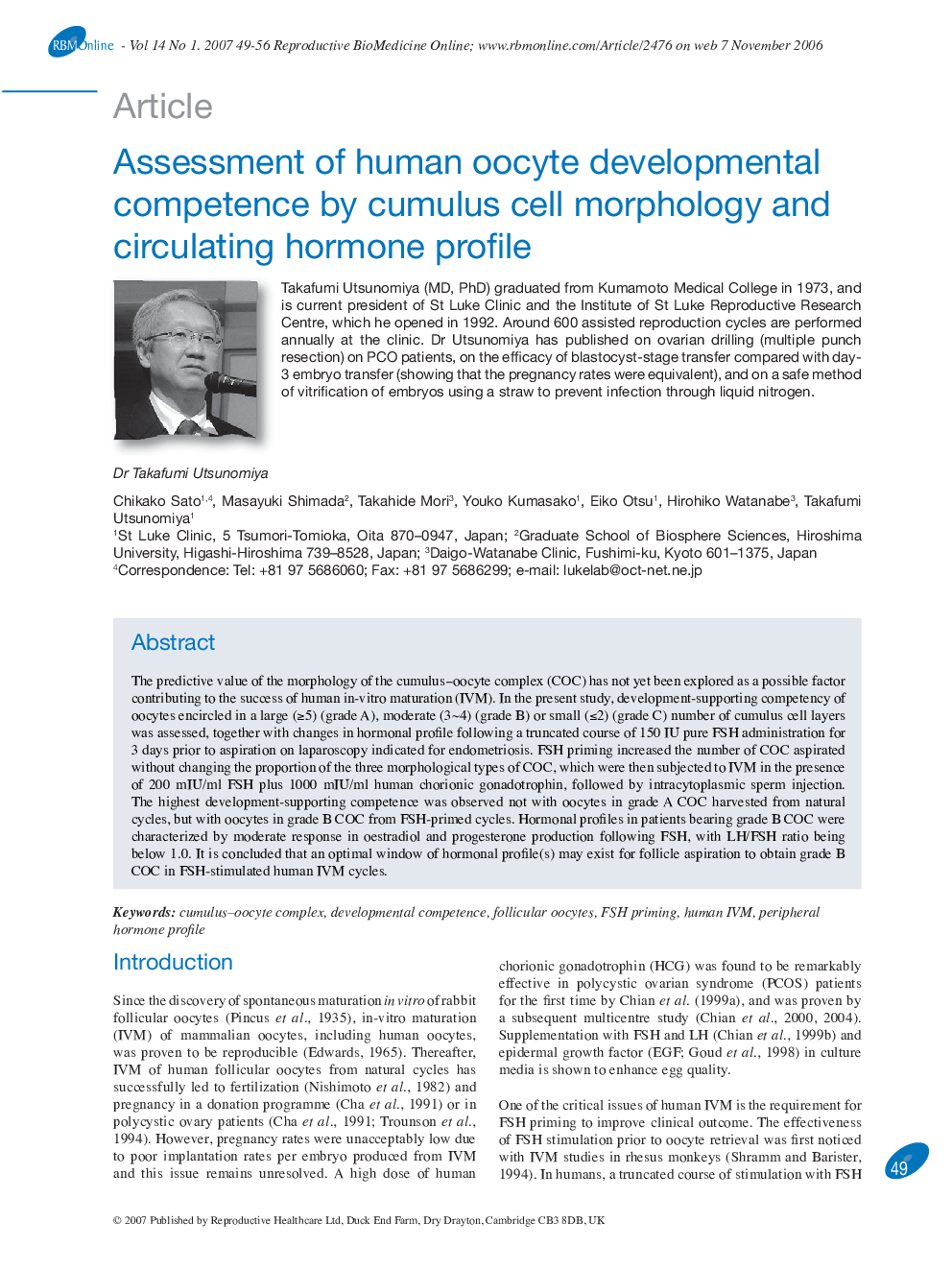| Article ID | Journal | Published Year | Pages | File Type |
|---|---|---|---|---|
| 3973250 | Reproductive BioMedicine Online | 2007 | 8 Pages |
The predictive value of the morphology of the cumulus–oocyte complex (COC) has not yet been explored as a possible factor contributing to the success of human in-vitro maturation (IVM). In the present study, development-supporting competency of oocytes encircled in a large (≥5) (grade A), moderate (3∼4) (grade B) or small (≤2) (grade C) number of cumulus cell layers was assessed, together with changes in hormonal profile following a truncated course of 150 IU pure FSH administration for 3 days prior to aspiration on laparoscopy indicated for endometriosis. FSH priming increased the number of COC aspirated without changing the proportion of the three morphological types of COC, which were then subjected to IVM in the presence of 200 mIU/ml FSH plus 1000 mIU/ml human chorionic gonadotrophin, followed by intracytoplasmic sperm injection. The highest development-supporting competence was observed not with oocytes in grade A COC harvested from natural cycles, but with oocytes in grade B COC from FSH-primed cycles. Hormonal profiles in patients bearing grade B COC were characterized by moderate response in oestradiol and progesterone production following FSH, with LH/FSH ratio being below 1.0. It is concluded that an optimal window of hormonal profile(s) may exist for follicle aspiration to obtain grade B COC in FSH-stimulated human IVM cycles.
